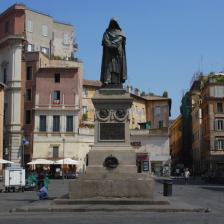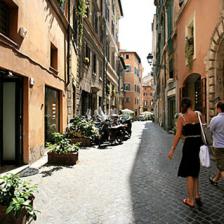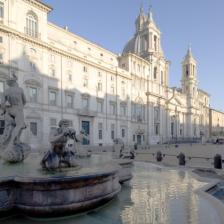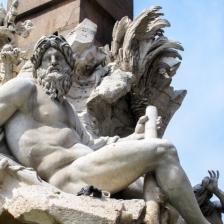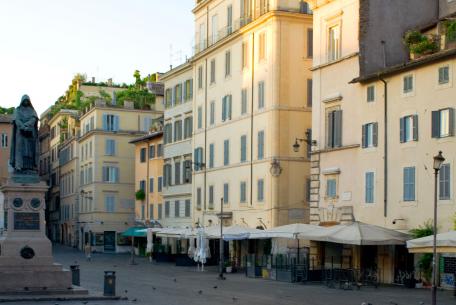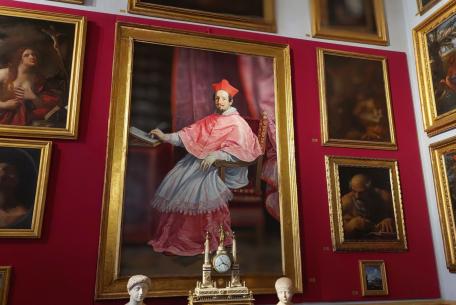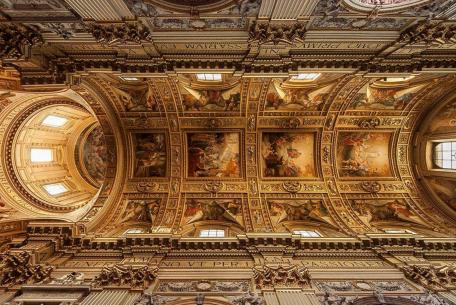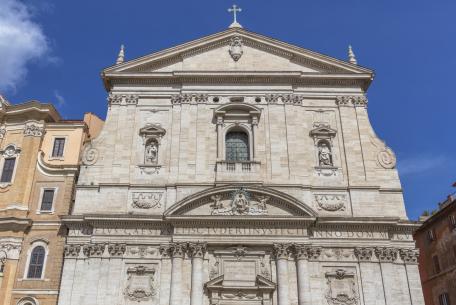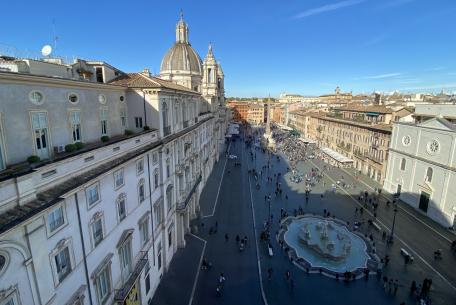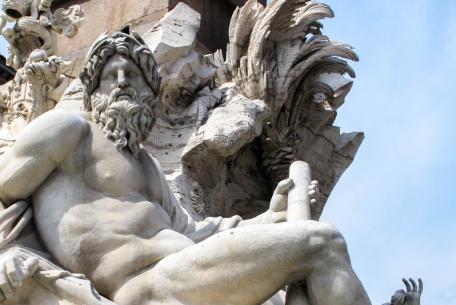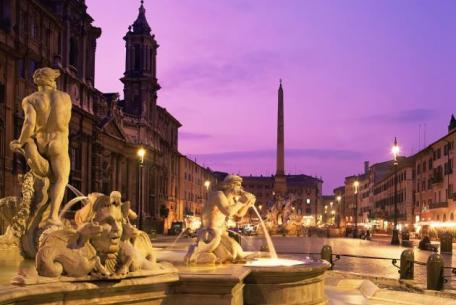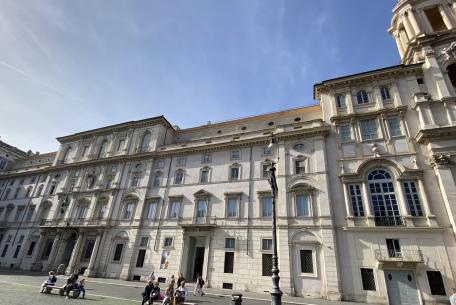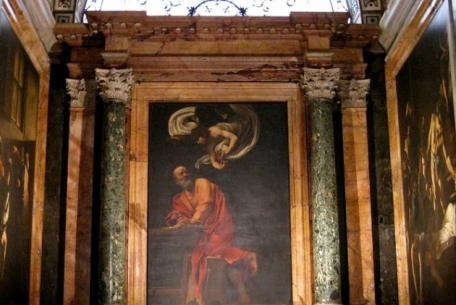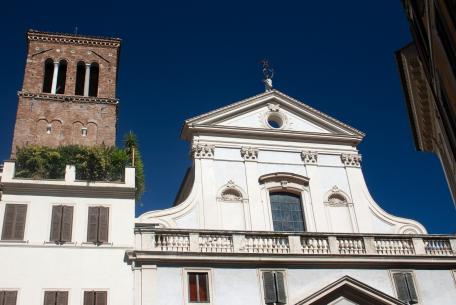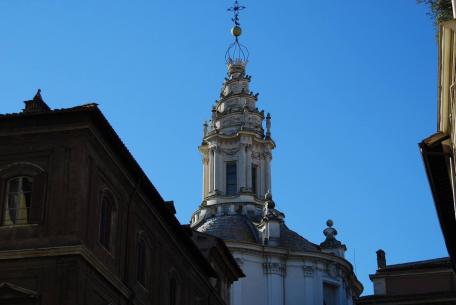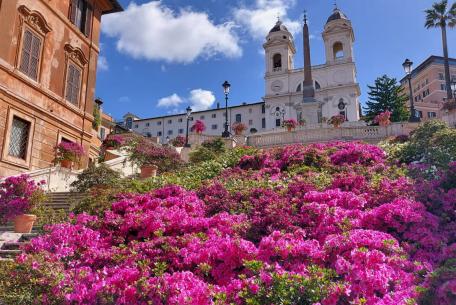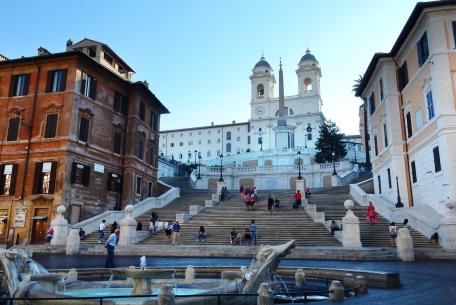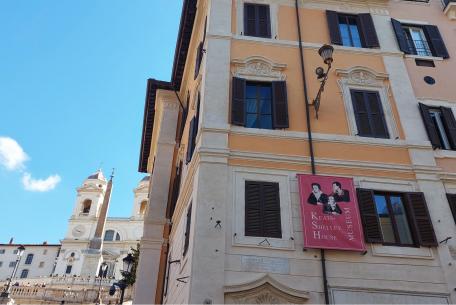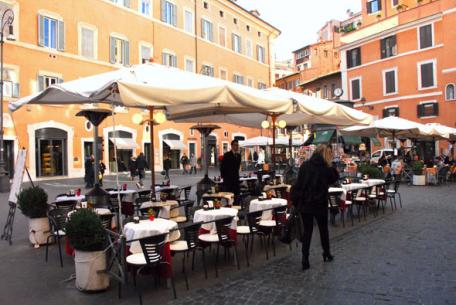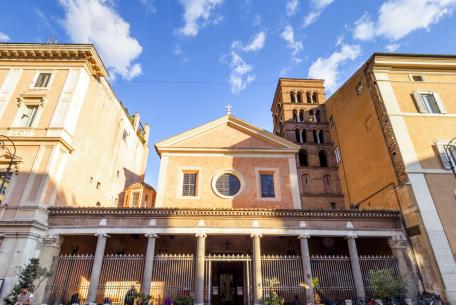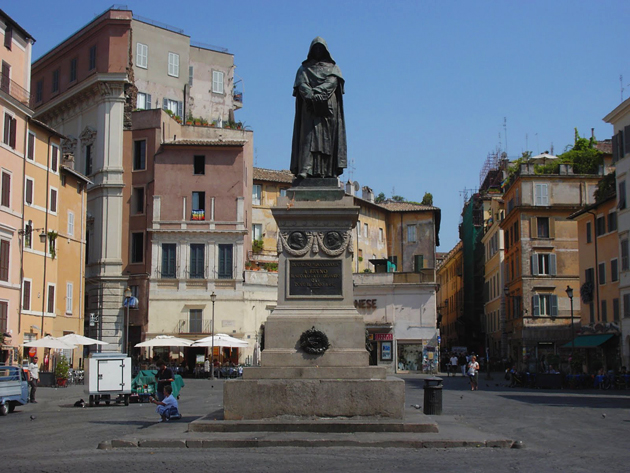
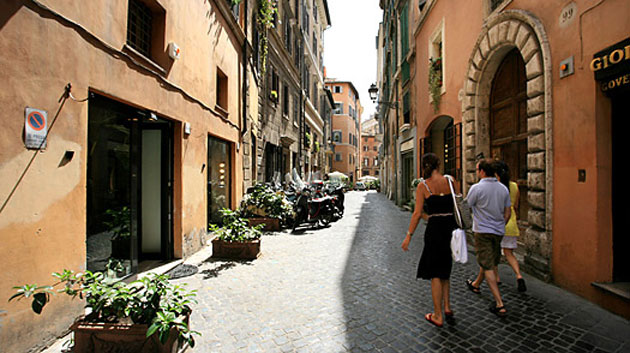
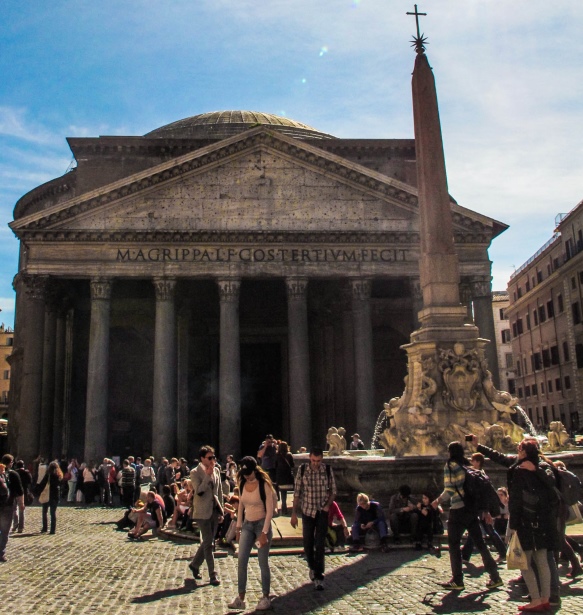
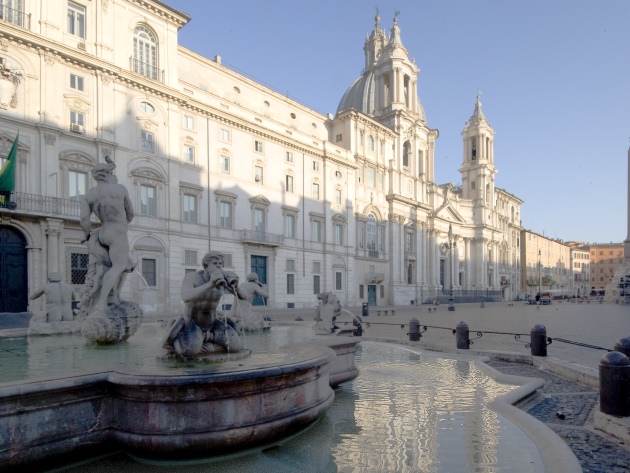
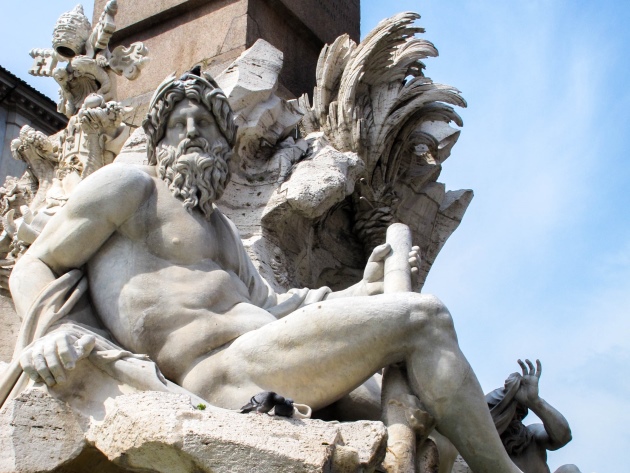
The stroll begins from one of the most fashionable piazzas of the capital: Campo de’ Fiori. The open-air market, in the morning, the cafes and the restaurants of the area, and its lively atmosphere, especially in the warm season, make this piazza always full of life. At the centre is the austere statue of the philosopher Giordano Bruno, who was burned at the stake for heresy in 1600.
Around this beautiful square, there are many little lanes with small shops and artisans' workshops for shopping, and looking aroung to discover the streets of ancient crafts: Via de 'Giubbonari, for the manufacturers of "gipponi", corsets and busts, Via dei Chiavari, whose name derives from the workshops of blacksmiths specialized in locks and keys, Via dei Balestrari, from the name of the guild of manufacturers and sellers of crossbows, and Via dei Baullari, for the many shops of manufacturers of trunks and suitcases.
Behind Campo de 'Fiori, in Piazza Capo di Ferro, is Galleria Spada, which preserves the most spectacular Baroque artifice of Rome, the illusionistic Colonnade (or Perspective) created in 1653 by Francesco Borromini.
From the square, we head towards Corso Vittorio Emanuele II. Walking to the right, we arrive at the splendid Basilica of Sant’Andrea della Valle, the magnificent backdrop of the first act of Puccini's Tosca. Inside, we admire the Barberini Chapel, the probable musician inspiration for the Attavanti Chapel in scenic fiction. Outside is Abbot Luigi, one of the famous Talking Statues of Rome.
Crossing the street, a short distance on the left, we find the Church of Santa Maria in Vallicella, traditionally known as Chiesa Nuova. Here is a "motorized masterpiece" hiding another masterpiece: an altarpiece by Pieter Paul Rubens, whose centre is a real "baroque machine" painted on an extraordinary copper plate, that "hosts", reproducing and protecting it, the 14th-century fresco below. In front of the church is the picturesque Fontana della Terrina, which resembles a large travertine tureen, realized by the architect and sculptor Giacomo Della Porta and initially located in Campo de 'Fiori.
You just have to cross Corso Vittorio Emanuele II and you are in Piazza Navona. Established on the ashes of the Circo di Domiziano (Circus of Domitian), where athletics competitions, games and horse races took place, today it is one of the most elegant and lively piazzas of Rome. Surrounded by cafes with their little outdoor tables, shops and restaurants, the piazza has three splendid fountains, including the "Fontana dei Quattro Fiumi" (The Fountain of the Four Rivers), for which Bernini was commissioned on the occasion of the Jubilee of 1650. The majestic Agonale Obelisk standing at the centre of the Fountain is among some of the stone testimonies of the magnificent Iseo Campense at Campo Marzio, dedicated to the charming goddess Isis, together with the obelisks Macuteo in Piazza della Rotonda and Minerveo in Piazza della Minerva.
The sumptuous Palazzo Pamphilj overlooks the square, today seat of the Brazilian Embassy, in the past the house of the famous Donna Olimpia Maidalchini Pamphilj, nicknamed Pimpaccia. A thrilling legend is related to the powerful, brilliant and greedy noblewoman: every 7 January, her ghost can be spotted whizzing aboard a burning black carriage between Piazza Navona and Ponte Sisto, heading to Trastevere.
The square is one of the most beloved locations by Italian and international directors. It was a magnificent set of famous films, such as Angels & Demons by Ron Howard, To Rome with Love by Woody Allen, The Great Beauty by Paolo Sorrentino, Spectre by Sam Mendes and Anthony Minghella's The Talented Mr. Ripley.
Piazza Navona is enlivened every day by many artists who with their art succeed in just a few minutes in capturing the features and the typical expressions of those being depicted. Through the years this has always remained one of the favourite meeting places of Romans during Carnival, at Christmas and at Epiphany.
Just around the corner, you are in the antiques paradise: lamps, tables and desks are set out invitingly in the glittering shop windows of the antique dealers in Via dei Coronari, once full of shops of the "paternostari" or "coronari", the sellers of sacred objects and in particular of rosary crowns.
In via dei Coronari, let's discover the House of Fiammetta, traditionally attributed to the Florentine courtesan Fiammetta Michaelis, who lived in Rome in the 15th century. Among her lovers was Cesare Borgia, son of Alexander VI, known as "il Valentino".
In the nearby Via dei Portoghesi is the Torre dei Frangipane. It is related to a miraculous legend of a nobleman, a child and a monkey, thus called Tower of the monkey by everyone.
A few steps from Piazza Navona, in the splendid Church of San Luigi dei Francesi, we can admire three of Caravaggio’s masterpieces. On the facade, two salamanders erupt flames. Together with the deer's head with a cross between the antlers of the Basilica of Sant'Eustachio, the Borghese eagles, the Boncompagni dragons, and the Barberini bees of the baroque church of Sant'Ivo alla Sapienza, they are some of the many mysterious and fascinating animals in stone carved on the city's buildings.
Our itinerary brings you to the nearby Piazza della Rotonda, where the Pantheon stands. This monument has come down through the centuries almost unharmed, and the aspect that we admire is that which it had in ancient times. Dedicated to all the gods, it has no windows, just a single opening in the vault of about 9 metres, this being its only source of natural light.
This is the perfect district for a coffee break: by tradition, we suggest you to stop at Sant’Eustachio café, which seems to be the best one in Rome. The secret? Try to discover it!
While walking towards Piazza di Spagna, beside the magnificent Spanish Steps, is the Keats-Shelley House, final home of John Keats, one of the greatest English poet. Especially if it is a lovely sunny day, not to be missed the chance of visiting Piazza San Lorenzo in Lucina, a little square that seems from another age, considering it is only a few steps away from the main shopping street Via del Corso.This beautiful piazza is a typical rendezvous place for an aperitif in one of the many cafés and wine bars with oudoor tables. Comfortably seated, you can enjoy the view of the basilica of the same name, inside which is the Cappella Fonseca, designed by Bernini.
 Condividi
Condividi












































